How to Make Wool Dryer Balls at Home
This post may contain affiliate links. Read my full disclosure here.
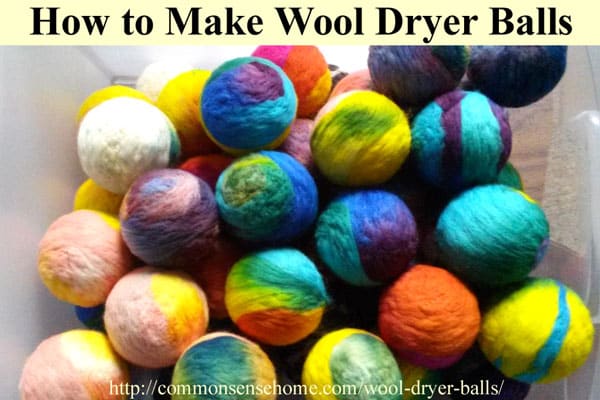
A lot of people have brought it to my attention that my wool dryer balls are ‘too bouncy’ to be 100% wool. If you were to say this to me in person, I’d invite you to cut one in half and see for yourself. I would also consider it to be a waste of the hard work I put into my dryer balls. The halved ball, on the other hand, I would be able to recycle into new dryer balls.
I don’t like to share anything about my process or the processes my art or craft goes through to get from point a to point b. This time, I will share my process. I find that it’s necessary for a dryer ball to have some bounce in it to bounce its way around the clothes dryer. It’s this bouncing action that is what actually softens the clothes as they’re being propelled around the inside of the clothes dryer. The balls wedge themselves between the items of clothing, reducing drying time and saving you money.
How to Make Wool Dryer Balls
I start out with about a 1/2 ounce of washed wool. I prefer to work loose, washed wool because it’s easier to compress by hand than a carded batt is.
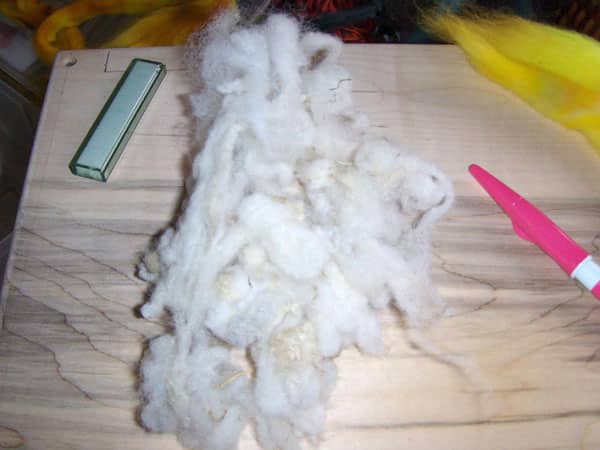
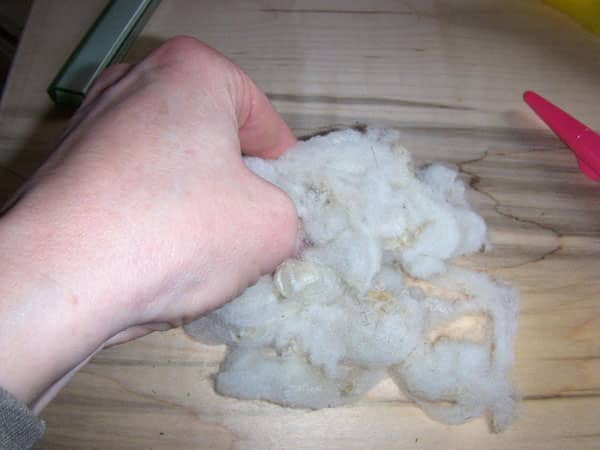
I compress or squeeze the wool tightly in my hand until it’s firm enough to start a binding yarn. The binding yarn will aid in holding the wool together as you wrap the yarn around it while squeezing the ball tighter.
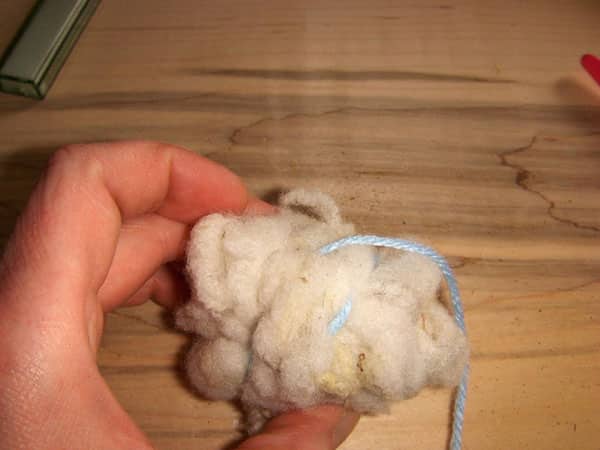
I keep adding more wool until the ‘wad’ is almost 2.25 inches in diameter. I begin by pushing the needle felting tool into the wool ball and keep doing this while I rotate the ball around and around.
Would you like to save this?
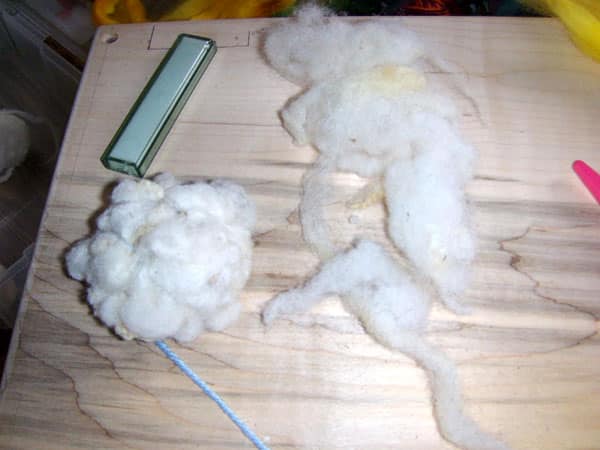
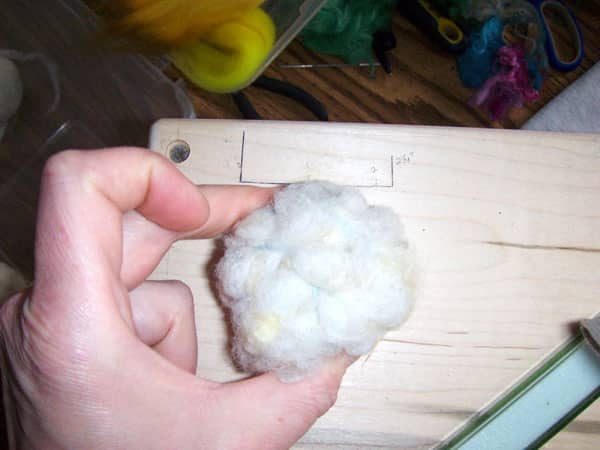
I continue to needle felt it into a nice, firm, round ball until it meets my expectations for bounce and…..

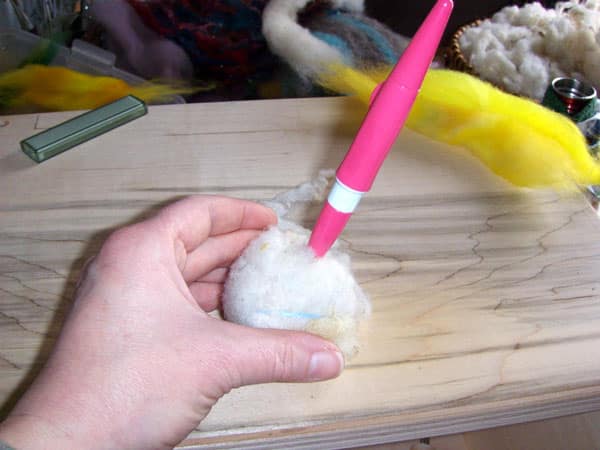
VOILA!! A dryer ball ready to be dressed up (covered with dyed wool, silk and/or decorative wool)! After you give it an outer layer of your choice, pop it in the dryer for ten minutes to “snug it all together” and it’s ready to go. I use 3-6 per load, so you’ll probably want to make up several at a time and give them dryer time together.
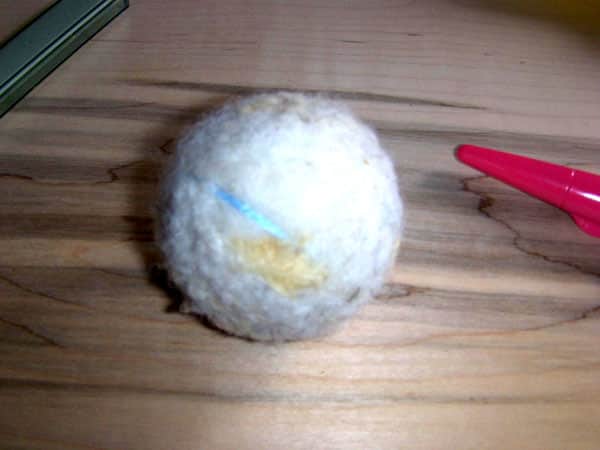
I’ve not bought any dryer sheets or fabric softeners for the past 4 years. Considering that I used to go through a box of 120 count dryer sheets every 3 months, I’d say that I’ve saved roughly $55 over the past 4 years and that’s not bad for a really small family.
On a side note – dryer balls are strictly fabric softeners and laundry fluffers. They do nothing to remove static electricity. To reduce static, do not over dry clothes, especially in winter when humidity levels are low. Dry clothes, especially synthetic fabrics, build up a static charge as they beat against the side of the dryer and other clothes – like socks sliding across a rug. The more they rub, the bigger the charge. Natural fabrics like cotton don’t build up much of a charge at all compared to synthetics, which are terrible static magnets.
Like the idea of dryer balls but want to have someone else do the work? Buy a set of dryer balls for your dryer today at the Frozen Tundra Fiber Arts Etsy shop!
Editor’s note: These make great soft toys for kids, like juggling balls or toddler toys, but are not good pet toys because of the risk that a pet may chew apart the ball and get some of the yarn stuck in their guts. On the rare chance that your child is likely to chew up the ball and eat it, then it is not a good choice for a toy. Leigh is a local friend of mine and I have an assortment of her pretty little dryer balls.
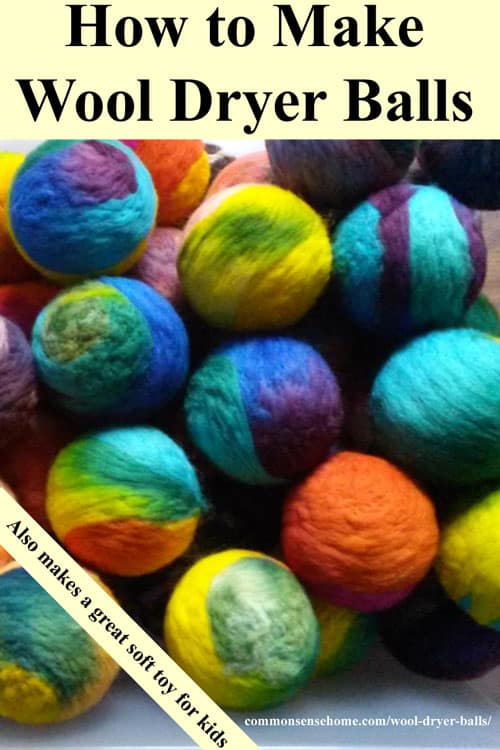


To combat the static electricity that the wool balls don’t do away with, in addition to the wool balls, use a ball of aluminum foil.
Interesting. I’ll have to try that.
Having grown up in the tropics, my exposure to wool garments and craft is recent but very enthusiastic. I’d like to give making dryer balls a try. Please expand a little on the instructions:
1) Is binding yarn spun differently than yarn for knitting. i.e. do I look ask for yarn with that specific term?
2) It sounded like the initial working of binding yarn into the roving does not involve a knot. Is there to be a knot when I have my 2.25″ diameter, or does this end remain loose or get pushed into the ball with the felting needle?
3) I can’t really see what the felting needle looks like, but but am guessing it has hooks in it push and pull the wool to tangle it into felt. Will the binder yarn color eventually work its way to the surface of the ball?
Static prevention tips that have saved my sanity: If you are like me, and require numerous layers of insulation to feel warm, it helps not only to avoid synthetics or layering wool with synthetics, but to start with a 100% cotton layer on the skin (Vermont Country Store stocks a fantastic, light but warm cotton knit thermal underwear in various styles using the same fabric). A cotton layer over the wool before putting on a synthetic jacket helps, too. In dry double digit subzero cold, layering several 100% wool layers over each other works fairly well, but even a small percentage of nylon will make sparks, as will mixing silk into wool layers. My husband has taught me to ground off any statically charged fabric I encounter by touching it to a metal spigot or other grounded metal. If I am statically charged, Laurie’s tip about tapping an insulated key to grounded metal works great, too. So glad I can love winter and still be warm!
The yarn I use, for binding the dryer balls, is just ordinary WOOL yarn. I usually buy yarn that matches the color of the wool I’m using to make the balls. It needs to be wool yarn so that it can be felted into and along with the rest of the wool in the ball you’re creating. Please, DO NOT, put any knots into your yarn and please don’t use yarn that is all knotted up as this will cause you to break your felting needles. (This happened to me a lot while I was developing my method.) When you’re ready to snip the yarn, grab a piece of wool and place it over the top of the cut off end and start felting there.
The needles in the felting tool have very sharp points with barbs on the first inch of the shaft of the needle. It is these barbs that grab the wool and pull it into the ball. You can see a better picture of the needle felting tool by clicking on this link: (http://www.amazon.com/gp/product/B00172TD5S?ie=UTF8&camp=1789&creativeASIN=B00172TD5S&linkCode=xm2&tag=commosensehom-20).
Thanks for the clarification! I’m looking forward to this project and happier laundry!
Sandy
You’re welcome.
Thank you for sharing your information on making dryer balls. I will be making these the right way now. I made some using a different method, but they are not felted and have fallen apart. Hopefully these will hold together better than my previous attempt. Thanks again.